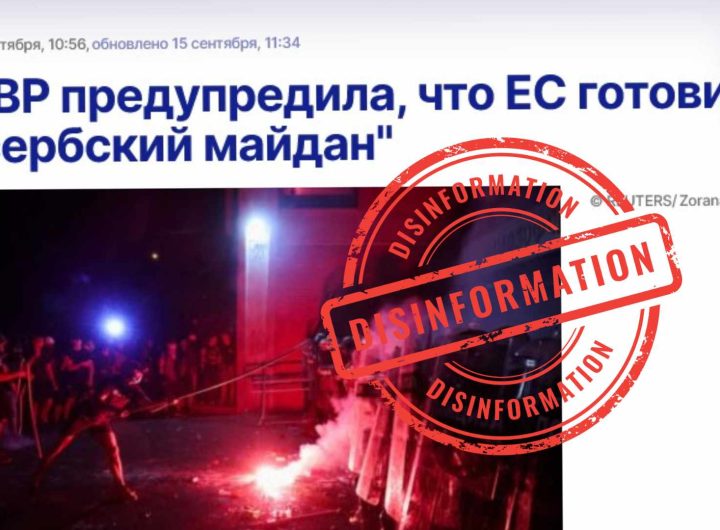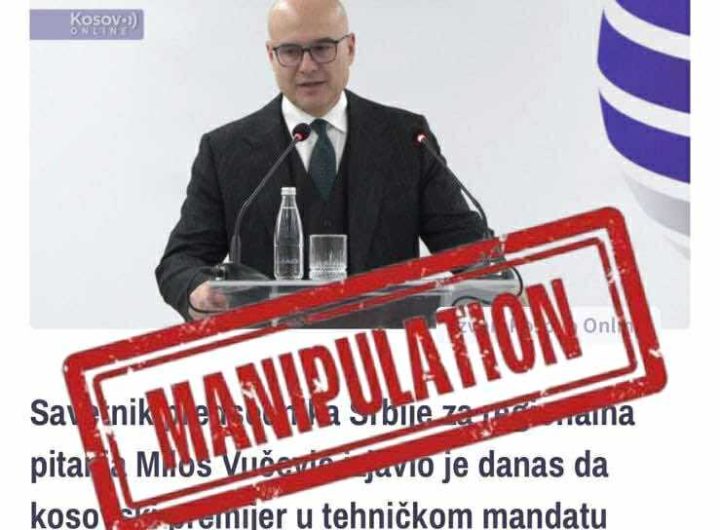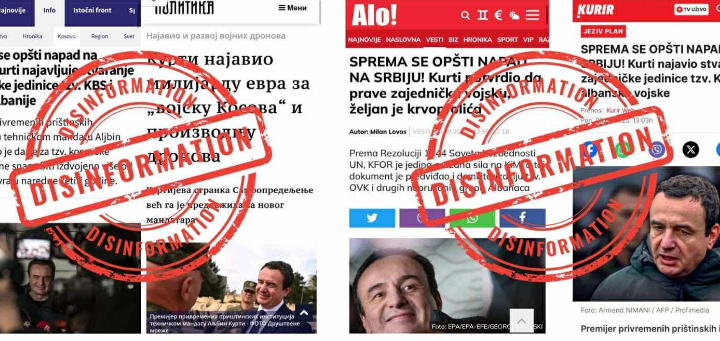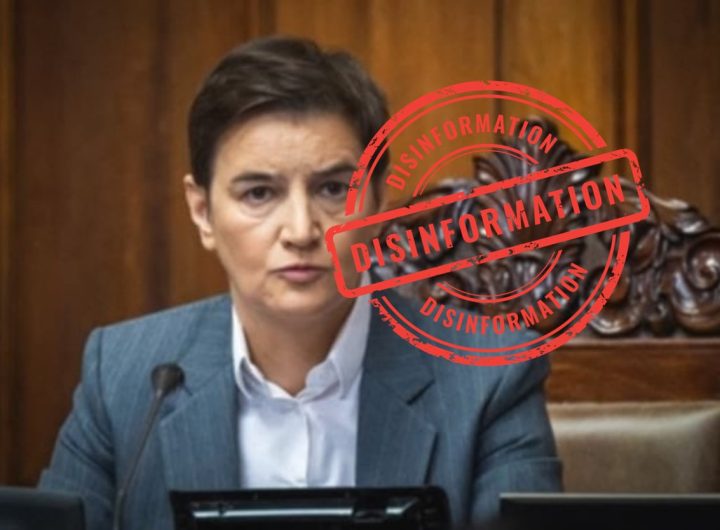
In a renewed attempt to manipulate public opinion, the so-called “Office for Kosovo and Metohija,” led by Petar Petković, together with the Serbian List and the portal “KosovoOnline,” launched a disinformation campaign against the Republic of Kosovo. At the center of this campaign is a staged event involving a fabricated graffiti case in the village of Goraždevac in the municipality of Peja. The so-called “Office for Kosovo and Metohija” used this case to construct a false narrative about an alleged threat to the Serbian community.
The Case: Exploiting Suspicious Graffiti to Incite Fear and Manipulate Public Opinion

On April 25, 2025, the official website of the so-called “Office for Kosovo and Metohija” published a photo (Photo 1) showing the graffiti “UQK” written on fresh concrete. Officials claimed the act occurred in Goraždevac, a Serb-inhabited village in Peja municipality, describing it as “offensive and provocative.”
However, the presented image contained no verifiable elements indicating the actual location or the authenticity of the event. From the outset, the lack of clear location and other visual evidence made the claim appear suspicious.
Disinformation Flow and Visual Editing
Soon after, the Serbian portal “KosovoOnline” published the same news, but this time with a different photo (Photo 2), where the graffiti “UQK” appeared on a house wall, not on concrete as originally shown.
Even though the source again cited the “Office for Kosovo and Metohija,” the two photos were clearly different, raising further doubts about the credibility of the entire event.

“KosovoOnline” had edited the image by cropping it to focus solely on the writing that supported their narrative. In reality, the original image (Photo 3) revealed a completely different scene: a wall filled with Serbian nationalist graffiti, including recognizable symbols such as “4S” (four Cyrillic S’s), “SRB” (short for Serbia), and “KiM” (short for “Kosovo i Metohija” – a Serbian ecclesiastical term used to manipulate the historical narrative).
Fabrication Indicators
A deeper analysis of the visual and informational materials reveals several key signs of fabrication:
- Linguistic Error
The graffiti “UQK” is an incorrect form of the Albanian abbreviation “UÇK,” which Albanians never use.
- Visual Manipulation
The image on “KosovoOnline” was deliberately cropped to hide the surrounding Serbian nationalist graffiti.
- Color Consistency
All graffiti, including the supposed “UQK,” were made with the same black paint and showed the same level of fading, indicating they were created at the same time.
Tactical Assessment
This case is a clear example of the use of a “cheapfake” – a simple and low-cost form of manipulation that aims to create a false reality without the use of advanced technology. Unlike “deepfakes,” which involve sophisticated digital alterations, the effect here is achieved through selective use and processing of existing material, deliberately distorting public perception.
Political Involvement
The so-called “Office for Kosovo and Metohija” appears as the main initiator of this disinformation campaign, while the “KosovoOnline” portal acts as a narrative amplifier. Meanwhile, the Serbian List has chosen a more reserved stance, reacting only through public statements and offering no visual evidence, suggesting an attempt to avoid direct exposure to the manipulation.
Conclusion
This case clearly illustrates how coordinated disinformation tactics aim to influence public perception, both within the Serbian community and on the international stage. By using simple manipulative techniques such as “cheapfakes,” Serbian political actors attempt to reinforce victimization narratives and incite interethnic tensions, manipulating perceptions not grounded in facts, but in deliberately constructed impressions./The Geopost/

 EU targeted by Russian intelligence services
EU targeted by Russian intelligence services  Vučević manipulates facts: Kurti is threatening with weapons and trying to ignite the region
Vučević manipulates facts: Kurti is threatening with weapons and trying to ignite the region  Serbian media disinforms about Kosovo’s military investments: Dangerous sensationalism and manipulation of information
Serbian media disinforms about Kosovo’s military investments: Dangerous sensationalism and manipulation of information  Brnabic disinforms: The canopy in Novi Sad collapsed as the start of a color revolution
Brnabic disinforms: The canopy in Novi Sad collapsed as the start of a color revolution  Petkovic disinforms about a property in the north, denied by the Property Verification Agency
Petkovic disinforms about a property in the north, denied by the Property Verification Agency  Lavrov’s disinformation: Moscow the “peacemaker”, the West the aggressor
Lavrov’s disinformation: Moscow the “peacemaker”, the West the aggressor